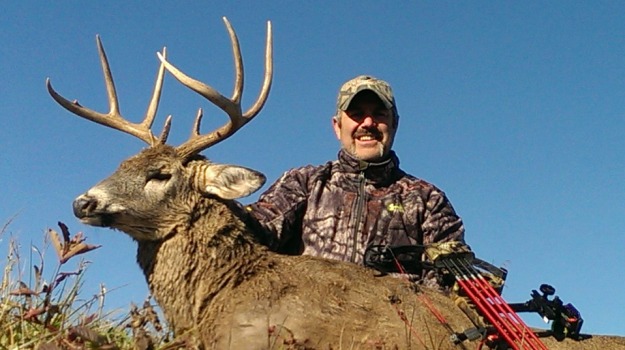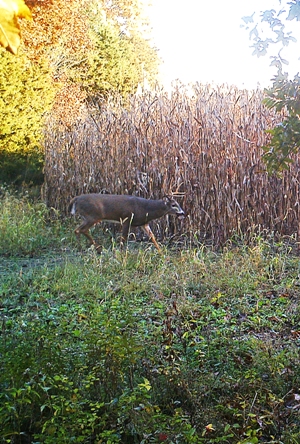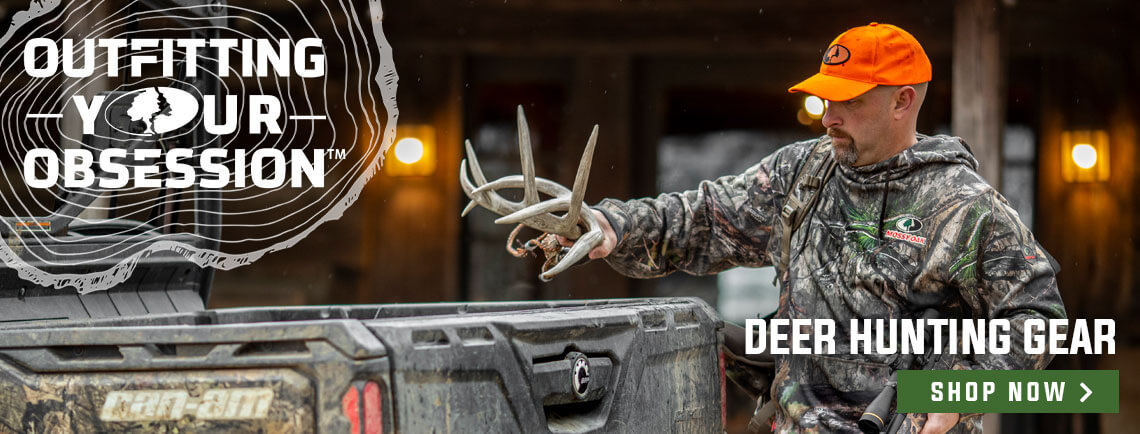
Editor’s Note: Mike Magrew of O’Fallon, Missouri, is Mossy Oak’s whitetail regional ProStaff manager for Illinois, Missouri and Kansas and has been hunting whitetails for 35 years.
I was hunting in my home state of Missouri. I had scouted this area before, and I knew there were some quality bucks in this region. I wasn’t able to spend as much time scouting there in 2014, as I had in the past, because I’d spent so much time hunting in Colorado for elk and mule deer. I didn’t get back to put out my trail cameras until I had returned from my Colorado hunt, about the middle of October. I knew there were a lot of bucks in this area, but I also knew that to take a good buck, I would have to spend quite a bit of time in my tree stand. I decided to hunt a region that no one had hunted all season. On the morning of the hunt, to prevent the deer from smelling me, I had to take a different route than the trail I had planned to use to go there. I knew I would have to cross a creek and take the long way around to reach the spot I wanted to hunt. However, I had learned not to force the issue, if the wind wasn’t right to hunt from a particular stand site. No one wants to walk farther than they think they must to reach a good hunting site. But if I went to my stand site with a bad wind, I knew that I drastically would reduce my chances for taking a nice buck.
 I only had been in my stand for about an hour when I spotted a really nice, wide 8-pointer coming my way. I said to myself, “Mike, you would’ve never seen this buck, if you hadn’t taken the long way around to get to your stand.” I spotted the buck as he came out of his bed near an old white farm house. I realized that by going to my stand in the dark, being as quiet as possible, getting into my stand and sitting in the dark for awhile, I hadn’t spooked the buck out of his bed.
I only had been in my stand for about an hour when I spotted a really nice, wide 8-pointer coming my way. I said to myself, “Mike, you would’ve never seen this buck, if you hadn’t taken the long way around to get to your stand.” I spotted the buck as he came out of his bed near an old white farm house. I realized that by going to my stand in the dark, being as quiet as possible, getting into my stand and sitting in the dark for awhile, I hadn’t spooked the buck out of his bed.
My tree stand was set-up right beside a creek. As I watched, I could see that the buck was headed for the creek right below me, coming down an old farm road in a pasture. He stepped on a leaf. That noise was what caused me to see him. The buck was coming from behind me when I heard that leaf crunch. I turned around and saw that the buck was only about 50 yards behind me. I had no cover between me and the buck. If my Mossy Oak camo didn’t work, I knew that I’d spook the buck. However, the buck never saw me dressed in my full Mossy Oak. A small bush was between me and the buck. When the buck’s head went behind that bush, I turned in my tree stand and took my bow off the bow hanger. I spotted one more bush in front of him that he would have to go behind - then I should be able to draw. I watched the deer approach the second bush. As his head went behind the bush, I drew my Bowtech RPM 360. The buck was close - really close - so I had to be as quiet as possible. Luckily, my bow was quiet as I drew. The buck stepped out from behind the bush, about 16 yards from my tree stand, and I let the arrow fly. Although the buck was quartering toward me, because of the angle he gave me, I knew I could clear his front shoulder and put my Rage Hypodermic broadhead in his vitals.
Once the deer took the arrow, he ran across the creek and a little ways up a hill. Then, he stopped and looked around, because he wasn’t sure what just had happened. Instantly, l looked back to the spot where I had taken the shot, and I saw the arrow and knew I had a complete pass-through. Looking back at the buck, I could see the wound. The buck was only 30 yards from me when he stopped. Then he backed up, fell down and landed in the creek. I left him on the side of the creek, went back to camp and got my truck. I was able to load him up by myself. He'd score about 130 on Boone & Crockett - a pretty big buck for an 8-point.





























